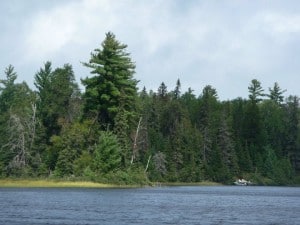
A recently-retired watershed manager from the Minnesota Pollution Control Agency has published a commentary explaining the threats of copper-nickel mining in the Kawishiwi River region.
Joel Peterson wrote in the Duluth News Tribune that lessons learned in the past few years point to problems for Twin Metals, the company currently seeking to renew mineral leases on the Superior National Forest. In 2014 and 2015, Peterson worked with the White Iron Chain of Lakes Association on a major MPCA-funded study of the lakes which are downstream of Twin Metals proposed mine site.
The study increased understanding of the lakes’ current conditions, which Peterson says will help detect if anything contaminates it in the future. The lakes, including White Iron, Birch, Garden, Farm, and Fall, all have generally good water quality at this time. It also showed how fragile the lakes are, a point Peterson referred to in his article.
“Twin Metals’ Government Affairs Adviser Bob McFarlin said in a News Tribune editorial on July 13 that ‘nothing new has occurred’ since Twin Metals’ mineral leases last were renewed. Nothing could be further from the truth. We know a lot more about the sensitivity of these waters than we did back then,” Peterson wrote.
The key information that Peterson says has been learned is that the lakes and rivers of northern Minnesota don’t have the chemistry to neutralize acid runoff, increasing the risk that mine waste could harm lake health and leach harmful metals from the rock.
Peterson concludes by stating that he doesn’t believe Twin Metals could mine copper-nickel ore without contaminating the White Iron Chain, which flows into the Boundary Waters and ultimately toward Rainy Lake. Read the whole article here.

